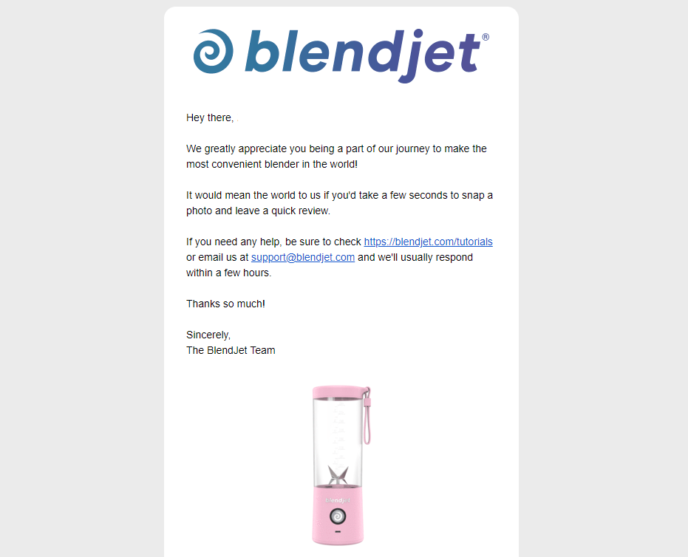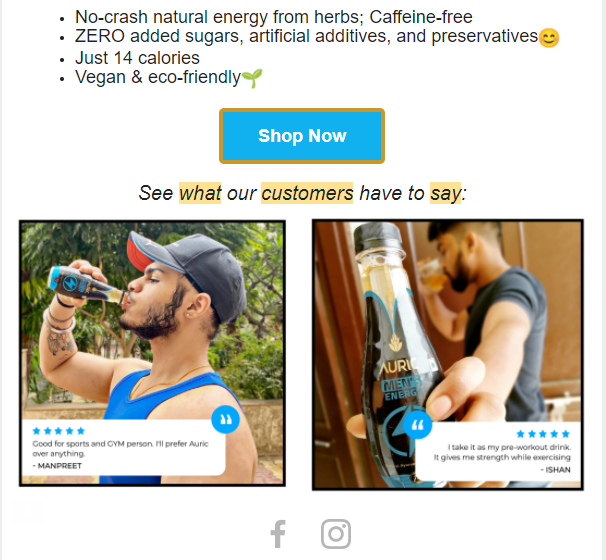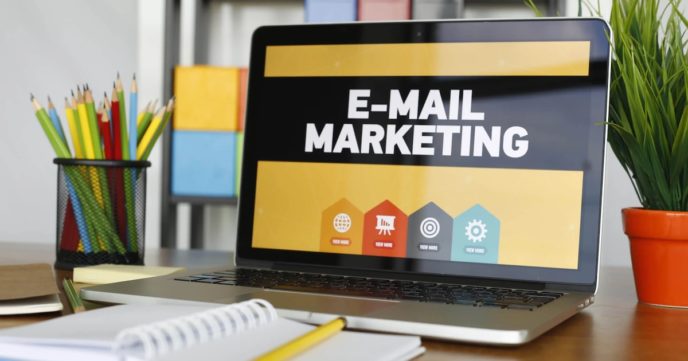It’s well known in the marketing world that keeping your current customers happy saves cost and is more profitable than constantly searching for new customers to buy from you.
And this is why it’s important to continue building your relationship with your customers long after they make a purchase.
There are many actions you can carry out after your customer buys something from your website. With the right marketing activities, you can make their experience better and ensure that you have a repeat customer. Learn more on what you should do after a sale to grow your business and create meaningful after-sales interactions with your audience.
Send acknowledgments immediately
In the world of eCommerce, after-sales receipts can be more than just a minor part of your sales automation. Very often, transaction receipts and invoices form one of the first experiences a new customer has with your business.
Receipts are a great touchpoint through which you can improve customer relationships. And if you craft your email receipts the right way, they can even increase your revenue.
Make sure you send acknowledgments, invoices, receipts, etc. immediately after a purchase. When customers see an email appear right away in their inboxes, it gives them peace of mind. Such receipts also help with any exchanges or returns that might need to be made.
Virtually every single eCommerce platform or payment gateway provides options to automatically send a receipt once a payment is completed. There’s little to no excuse not to send a receipt or invoice to your customers right away.
However, if you have built an eCommerce store from scratch, it’s possible to treat receipts as an afterthought. Avoid this since receipts are important pieces of evidence that reduce the sense of risk a customer feels after they buy from you.
Let customers know what happens next
In many online businesses, there’s a delay between when a purchase is made and when people receive their product or service. Although people do realize that it’ll take time for their product to arrive or for a live coaching session to start, they can still experience anxiety about what happens next. They’ll also want to know if they should take any steps beforehand.
In your follow-up email or receipt, let customers know what will happen next. Share the approximate shipping time, delivery method, tracking number, customer care information, and more.
Such basic information can go a long way towards making customers feel more secure and relaxed.
Send a thank-you email
This is one of the simplest yet commonly overlooked after-sales practices. If you want to keep your customers happy, make sure to send them a thank you email. This will make them feel appreciated and valued, which in turn will make them more likely to buy from you again.
To really express your appreciation, you can add exclusive discounts or other special offers in your email. It’s a powerful way to build loyalty and strengthen your relationship with your customer.
Feedback
Feedback is a critical customer experience indicator. After your product is downloaded or delivered, you can send your customers an automated email asking them to share their experience.
If a customer leaves negative feedback, you can fix any mistakes or make necessary improvements for future clients. Feedback is also important since it’s a form of documentation that’s essential for your business.
Asking for input also acts as a litmus test for whether you should encourage your customer to leave a public review and rating for your business or not. It’s also a great opportunity to show customers they are appreciated.
Ask customers to leave a review
Reviews and ratings left by previous customers on products are critical for the success of any digital business. Reviews help other customers know if they should purchase your product or not.

Blendjet sends an email asking for a review after the product is delivered
It’s a happy customer that will take the time to provide feedback and ratings on your business. So, make it as easy as possible for them to do this.
Here’s what you can do: create a drip campaign that’s triggered a few days after your product is downloaded or delivered (or after you know your product has been consumed). Link to a feedback form into the email so that users can easily leave a rating and review easily.
Surveys are also a way to understand what your customers feel about your brand and to learn more about their experience. The information you get can form the data from which you can build case studies, reports, white papers, and more.
In your email, you can also provide a link to a relevant platform for reviewing your business and maybe even encourage people to share pictures of their purchases. This is especially useful if you need your business to stand out in a business listing.
And finally, you can share positive reviews on your website or social media pages or even email them to subscribers.
Inform people about related products
When customers purchase products from you, they are often on the lookout for other things that will help them meet their goals.
If your business offers complementary products and services, you can send emails with relevant details right to their inbox.
In this way, you can upsell related products and increase your customer lifetime value while helping people.
Send educational content
In my business, we don’t just sell digital products that meet immediate needs. We also look at overarching goals and this is why we focus on educational content in our brands.
For example, one of our tools is an optin popup form. Using it, people can easily make attractive popups to capture emails. But is that really the end goal of our customers? Not really. Their real goal is to generate sales, build a strong relationship with customers, and build a profitable business.
And to meet these goals, we’ve created a University to help people learn how to boost conversions. We also send emails to help users learn how to use our tools well which leads to higher customer satisfaction and loyalty.
Share social media and blog content
One of the best ways to increase customer loyalty is by sending them blog and social media shares after they purchase something. Sending quality content prevents your content from sounding overly promotional. But you’re still staying in touch with customers and reminding them about your brand.

This email from Auric features happy customers
You’ll update customers on what’s new and help them learn new things. A smart idea is to personalize the blog posts and social media content you send by sending posts that are related to people’s recent purchases. Your readers will be more interested in what you have to say and will look forward to your content.
Conclusion
As you can see, there are many powerful after-sales steps you can take after you make a sale. The important thing is not to send or add too much content to your customers.
While you should always send receipts to customers right away, make sure that you vary the other types of content you send after a sale.
And also use metrics like click rates, email response rate, and other KPIs to see how well your content is doing. The more you learn about your content performance, the better you’ll shape your future material. And as a result, you’ll build a positive brand image that keeps customers coming back to you.
—
Syed Balkhi is an award-winning entrepreneur and online marketing expert. He is the co-founder of OptinMonster, WPBeginner, MonsterInsights, and WPForms.
